20140128-pina-mw21-001-910
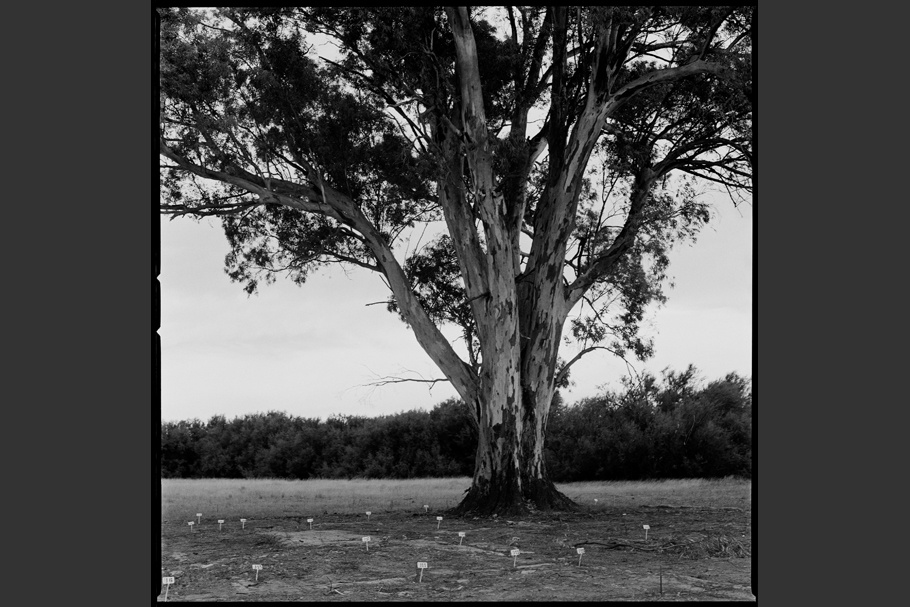
The archeological markers outlining what used to be “La Escuelita,” a former clandestine detention and torture center used by the Argentine army to interrogate and kill left-wing militants in Bahia Blanca, Argentina, during the military dictatorship from 1975 to 1983. This torture center operated during Operation Condor—a secret joint military plan among six key countries—Argentina, Bolivia, Brazil, Chile, Paraguay, and Uruguay—aimed at eliminating political opponents by using common resources and exchanging information, prisoners, and torture techniques. This plan, which was carried out during the 1970s, resulted in the “extrajudicial executions” of at least 60,000 people.
Bahia Blanca, Argentina, February 2012.
20140128-pina-mw21-002-910
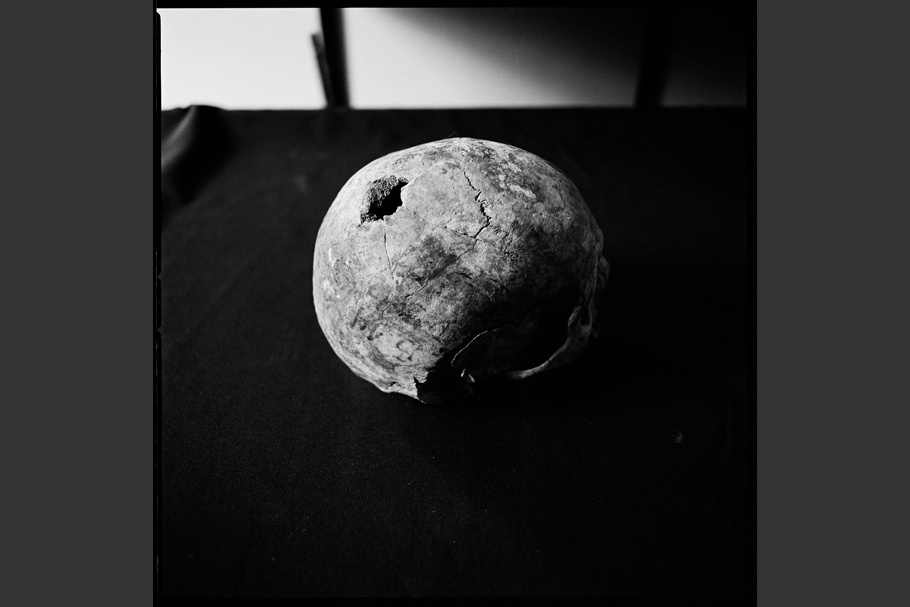
A skull with an exit wound from a bullet at the Equipo Argentino de Antropologia Forense lab, a nongovernmental scientific organization created with the help of forensic anthropologist Clyde Snow in 1984 to help investigate human rights abuses and to exhume, identify, and return the remains of “desaparecidos” to their families in Argentina. Today the Equipo Argentino de Antropologia Forense has worked in more then 30 countries worldwide.
Buenos Aires, Argentina, February 2012.
20140128-pina-mw21-003-910
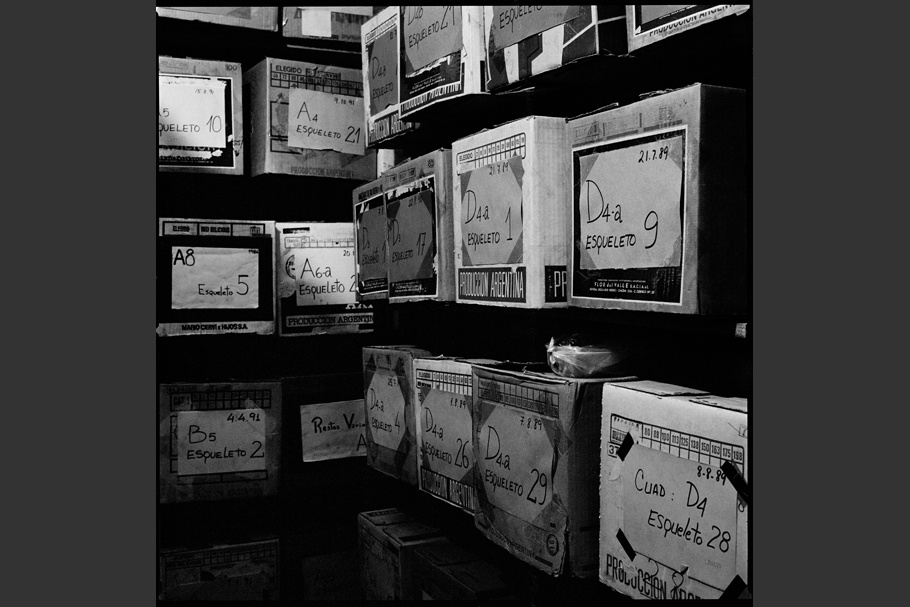
A storage room at the Equipo Argentino de Antropologia Forense lab, a nongovernmental scientific organization. The boxes are full of recovered remains of people who were abducted and killed—“disappeared”—for political reasons. The unidentified remains are stored at the lab until strong evidence is found or presented that confirms the identity of the disappeared person and allows the remains to be returned to family members.
Buenos Aires, Argentina, January 2012.
20140128-pina-mw21-004-910
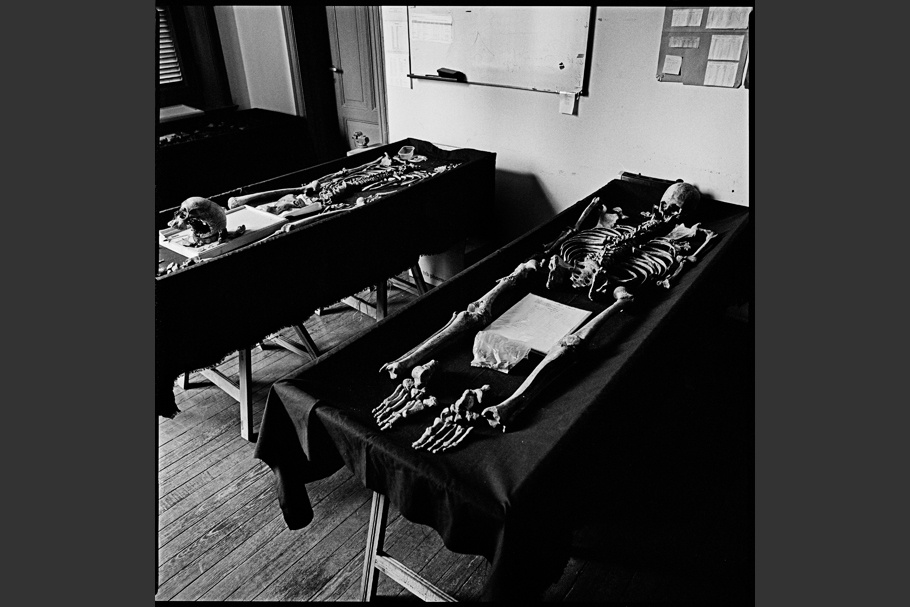
The remains of two unidentified bodies lie in the lab of the Equipo Argentino de Antropologia Forense, a nongovernmental scientific organization in Buenos Aires. Lab staff members will study the bodies and attempt to determine their identities.
Buenos Aires, Argentina, January 2012.
20140128-pina-mw21-005-910
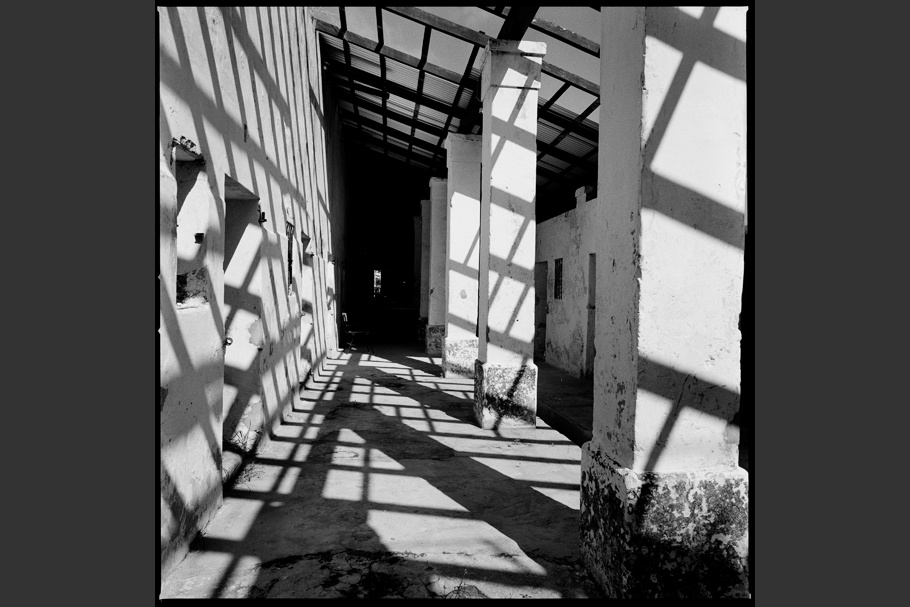
A view of what used to be the cells of the Emboscada concentration camp in Paraguay. This camp was built to detain political prisoners in Paraguay during the military dictatorship of Alfredo Stroessner. Today the camp is a high-security prison for men, and the former cells are used for workshops and classrooms for incarcerated people.
Emboscada, Paraguay, November 2012.
20140128-pina-mw21-006-910
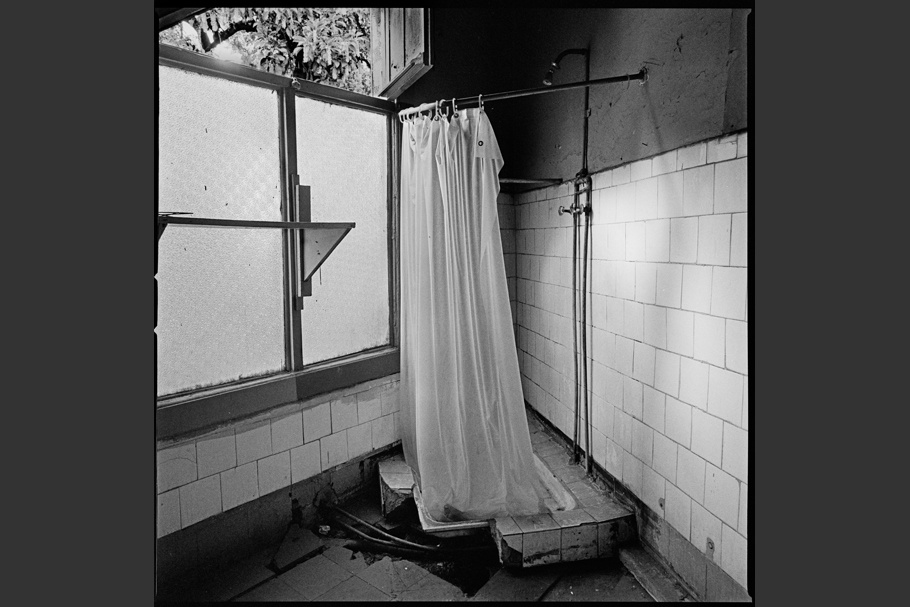
A bathroom of Londres 38, a former clandestine detention and torture center used during the military dictatorship of General Augusto Pinochet of Chile.
Santiago, Chile, December 2008.
20140128-pina-mw21-007-910
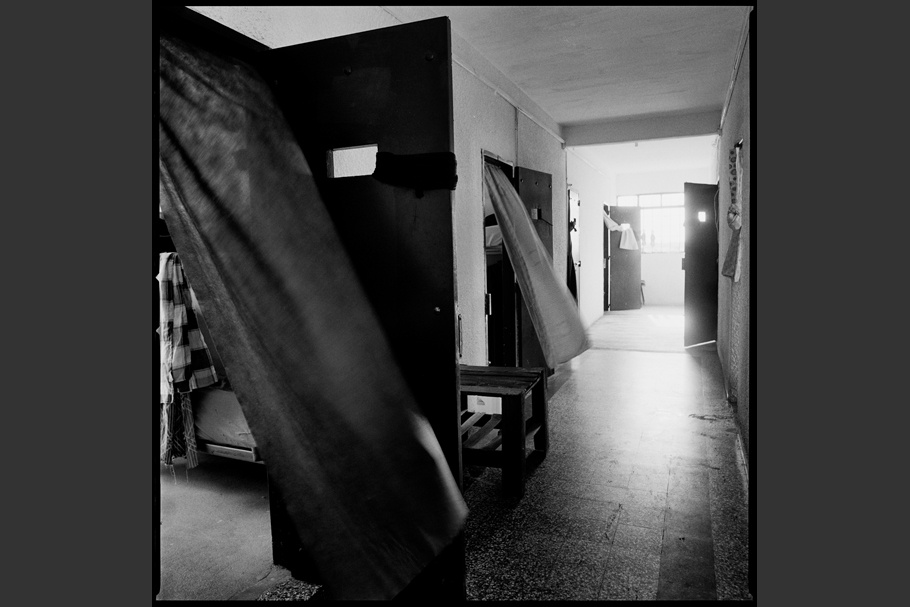
One of the cell areas in the Punta de Rieles prison in Montevideo, Uruguay. The prison held female political prisoners during the Uruguayan dictatorship in the early 1970s. After democracy was restored in 1985, Punta de Rieles closed and later reopened as a prison for those convicted of committing civil crimes.
Montevideo, Uruguay, February 2012.
20140128-pina-mw21-008-910
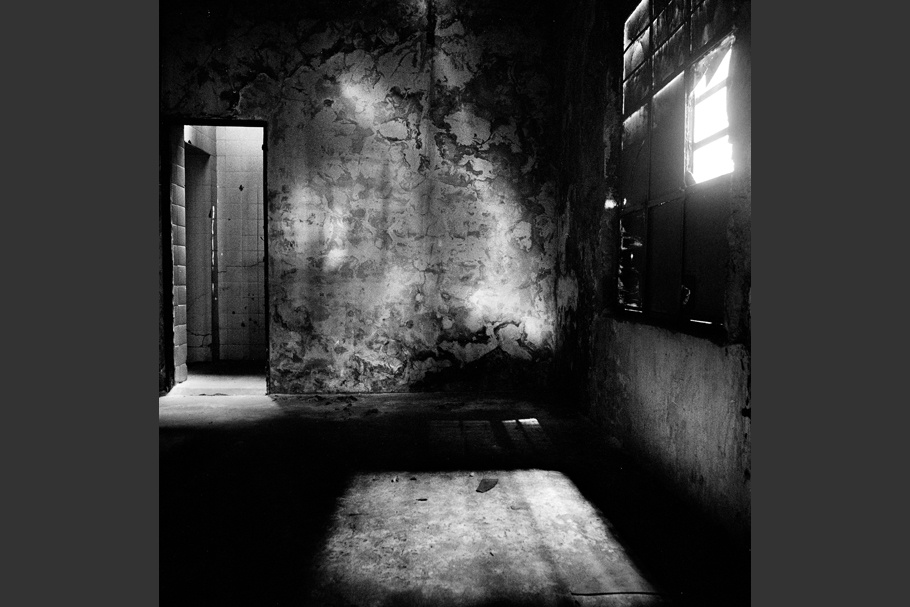
The torture room of “El Olimpo,” a former clandestine detention and torture center used by the Argentine federal police and security forces to interrogate and kill left-wing militants and citizens during the military dictatorship of 1975 to 1983.
Buenos Aires, Argentina, November 2007.
20140128-pina-mw21-009-910
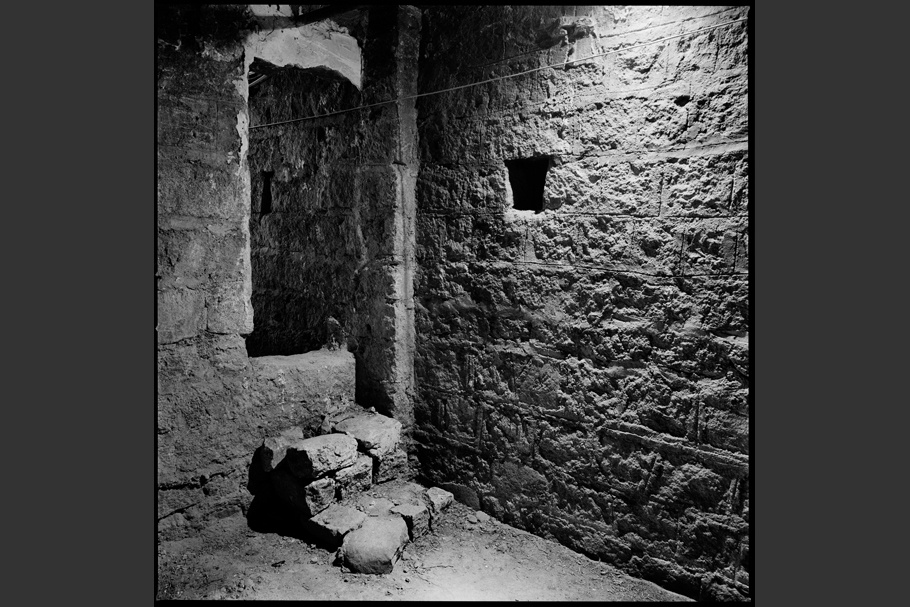
A cell inside a former clandestine torture center and jail in the basement of the Interior Ministry in La Paz, Bolivia.
La Paz, Bolivia, November 2012.
20140128-pina-mw21-010-910
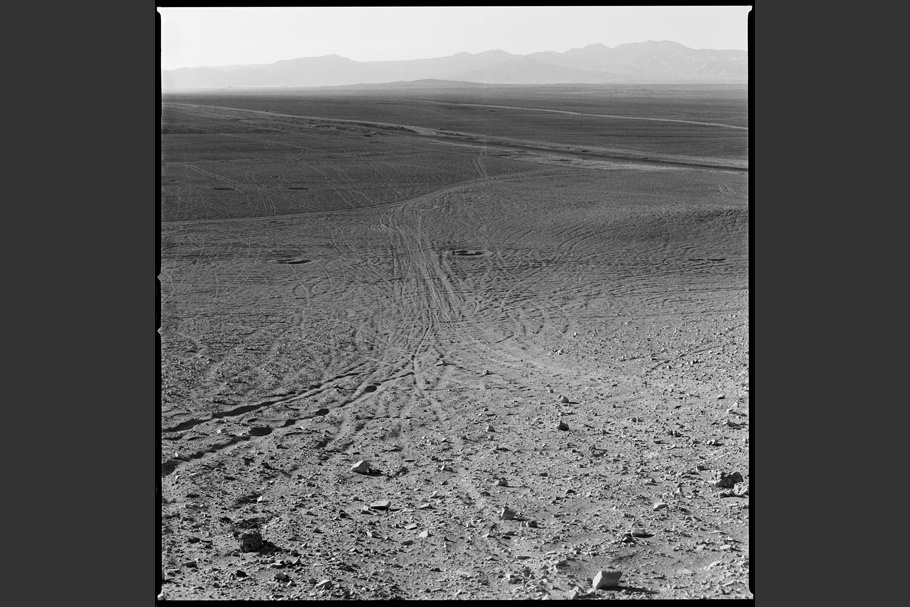
The Atacama Desert located in northern Chile. In 1973, the Chilean military under General Augusto Pinochet created a special task force known as the “Caravan of Death.” The task force swept through Chile, arresting, torturing, and killing hundreds of citizens and burying them in unmarked graves. The “Caravan of Death” ended its tour in the Atacama, where many of its victims still lie in undiscovered mass graves.
Atacama, Chile, March 2012.
20140128-pina-mw21-011-910
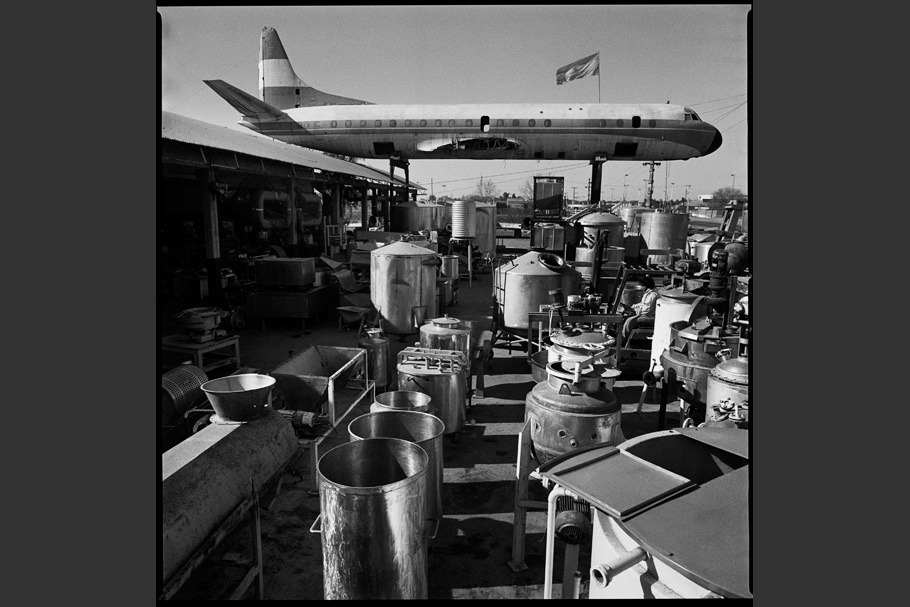
During Argentina’s military dictatorship, security forces executed left-wing militants by taking them out in this plane for what became known as the “Death Flights”—flights in which the militants would be thrown alive from the plane into the La Plata River and the Atlantic Ocean. Today, the plane is used as an advertising prop for a building supply store on the outskirts of Buenos Aires.
Esteban Echeverria, Argentina, September 2011.
20140128-pina-mw21-012-910
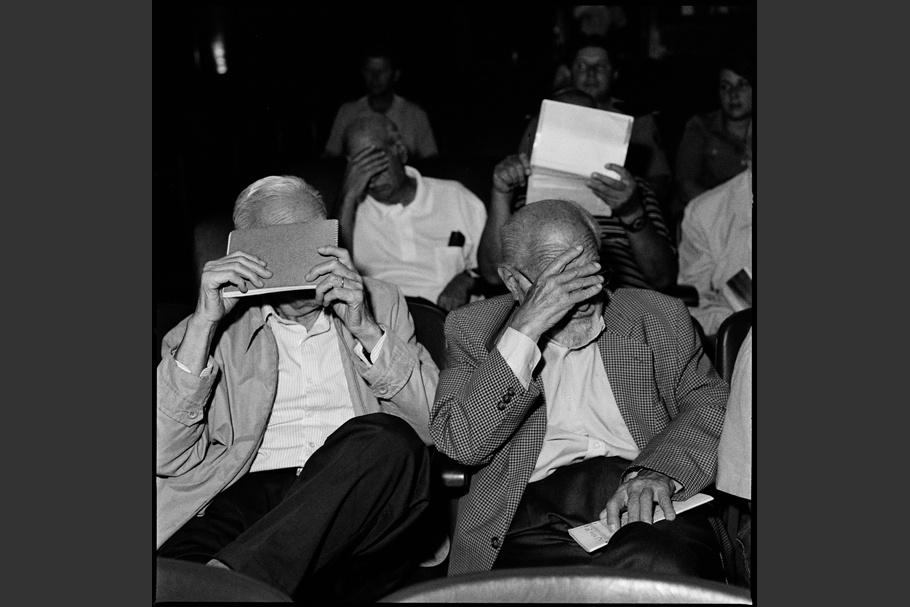
Former military men hide their faces during a trial conducted by the Argentine government to prosecute former officials for crimes against humanity that were committed by the military dictatorship from 1976 to 1983.
Bahia Blanca, Argentina, February 2012.
20140128-pina-mw21-013-910
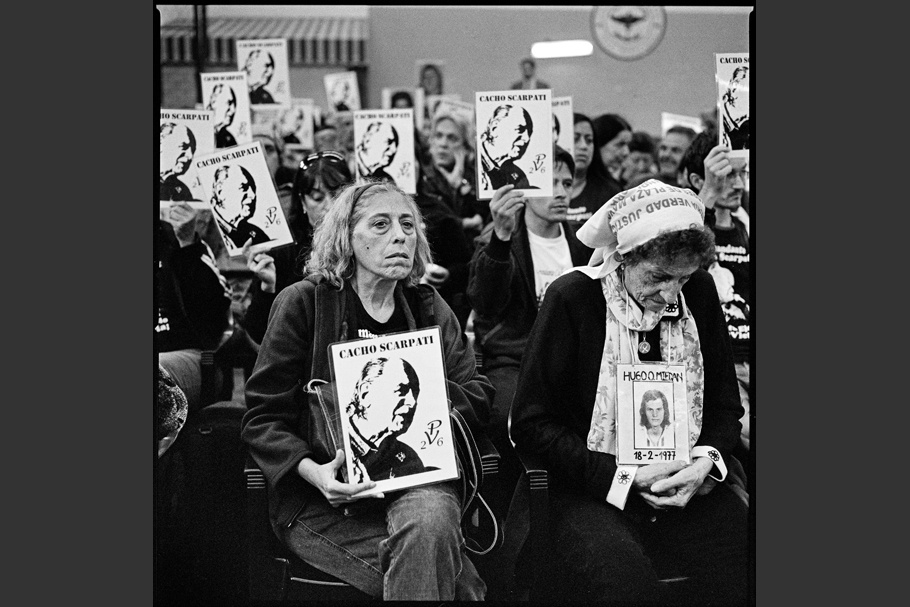
Families and friends of the victims of the Campo de Mayo concentration camp wait in court for the sentences to be delivered. The trial resulted in the former president Reynaldo Bignone and other officials receiving sentences of 25 years in jail for crimes against humanity.
Florida, Argentina, April 2010.
20140128-pina-mw21-014-910
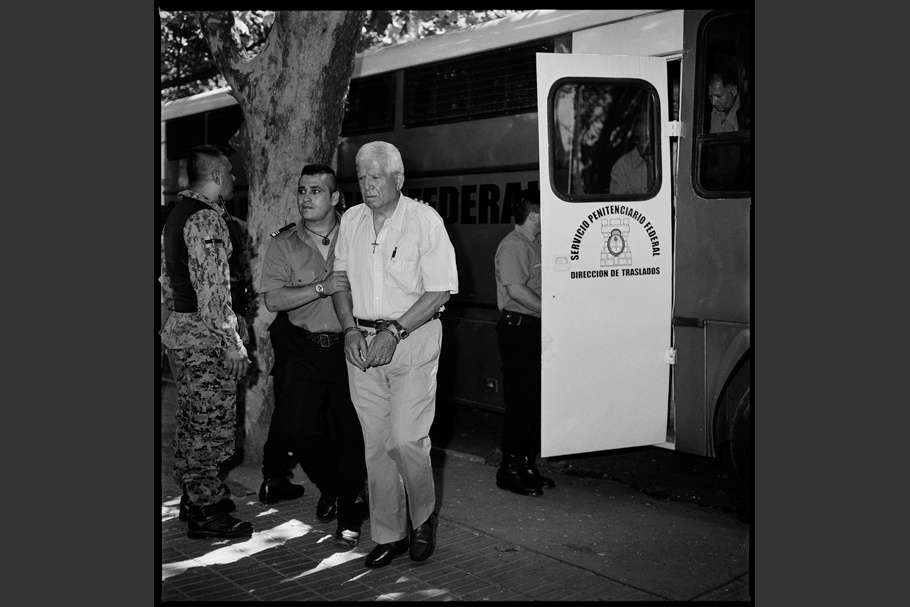
A prison guard escorts Colonel Hugo Delme as he is transported from jail to the courthouse in Bahia Blanca. Delme, a retired army colonel, was accused of committing crimes against humanity—torturing and disappearing left-wing militants during the last Argentine dictatorship from 1976 to 1983. Delme was found guilty and sentenced to life in prison in 2012.
Bahia Blanca, Argentina, February 2012.
20140128-pina-mw21-015-910
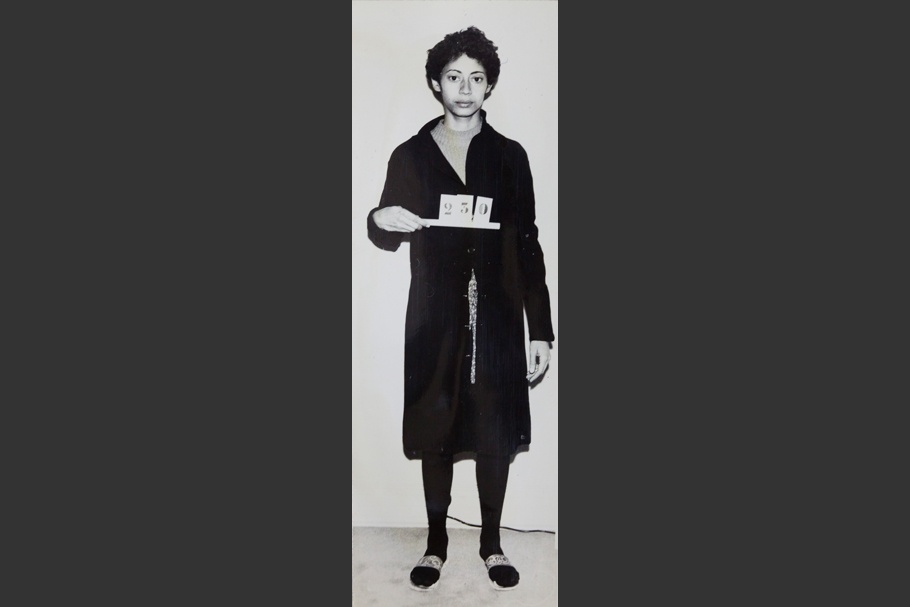
Photographer unknown.
Mug shot of a Brazilian political exile living in Chile taken by Argentinian authorities in September 1973 when a military coup headed by Chile’s General Augusto Pinochet forced her to request refuge in the Argentinian embassy. Her photograph and political records were later found in the archives of the intelligence section of the Buenos Aires police.
20140128-pina-mw21-016-910
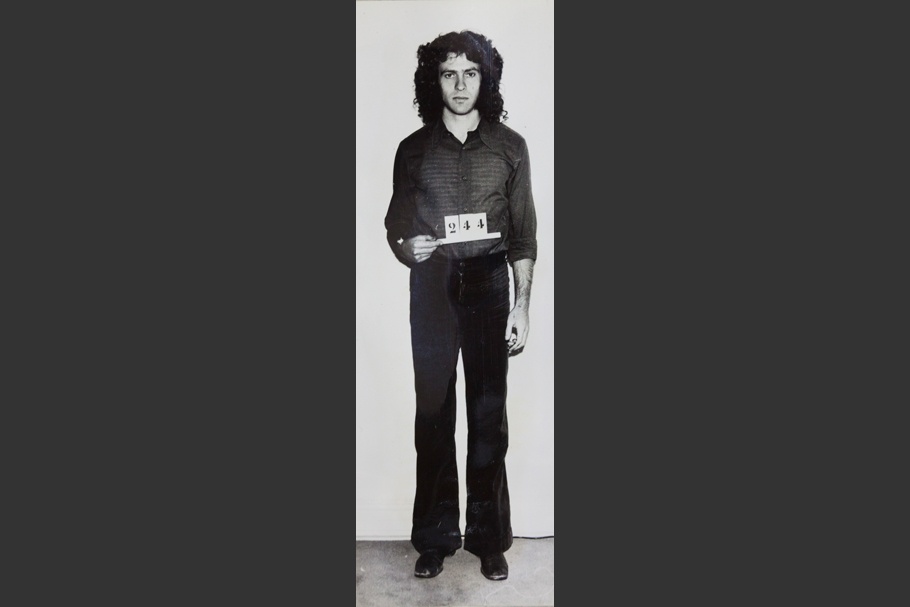
Photographer unknown.
Mug shot of a Brazilian political exile living in Chile taken by Argentinian authorities in September 1973 when a military coup headed by Chile’s General Augusto Pinochet forced him to request refuge in the Argentinian embassy. His photograph and political records were later found in the archives of the intelligence section of the Buenos Aires police.
20140128-pina-mw21-017-910
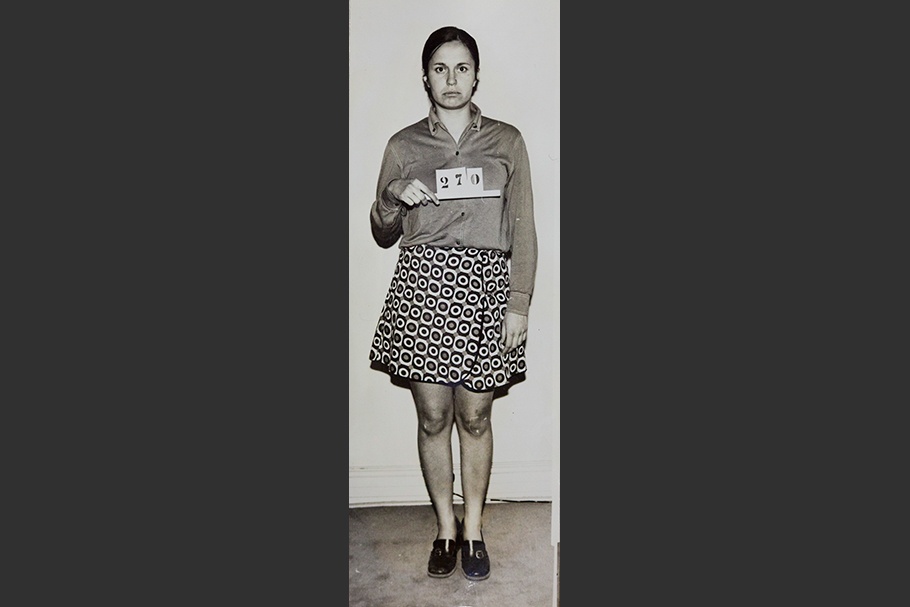
Photographer unknown.
Mug shot of a Brazilian political exile living in Chile taken by Argentinian authorities in September 1973 when a military coup headed by Chile’s General Augusto Pinochet forced her to request refuge in the Argentinian embassy. Her photograph and political records were later found in the archives of the intelligence section of the Buenos Aires police.
20140128-pina-mw21-018-910
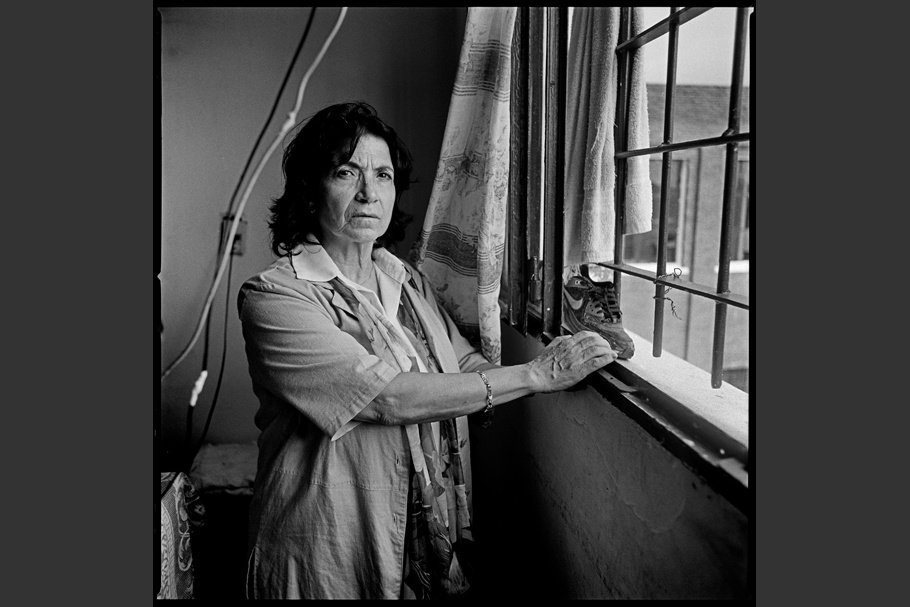
Anahit Aharonian, looking from the window of her former cell in the Punta de Rieles prison in Montevideo, Uruguay. Aharonian is a descendant of survivors of the Armenian genocide and was born in Uruguay. She became involved in politics as a teenager and embraced the Tupamaro National Liberation Movement, an urban guerrilla organization in Uruguay in the 1960s and ’70s.
She was arrested by the military during the early days of the Uruguayan dictatorship, and spent 12 years in prison during Operation Condor, a joint secret military plan among six key South American countries aimed at eliminating political opponents using common resources and exchanges of information, prisoners, and torture techniques.
Montevideo, Uruguay, February 2012.
20140128-pina-mw21-019-910
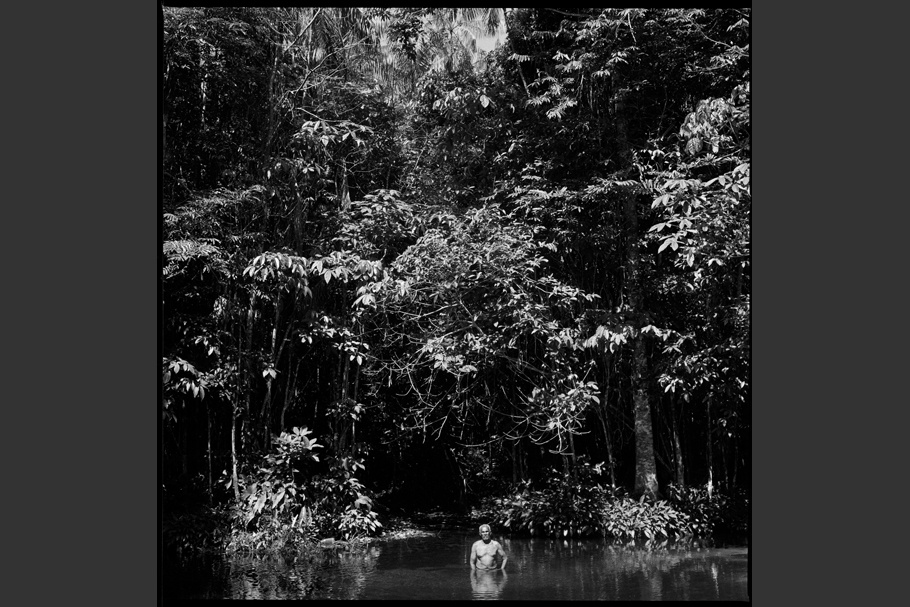
Salvador Gonçalves, a farmer from the Araguaia region who helped Brazilian guerilla fighters and was later arrested and tortured by the military at the Bacaba concentration camp in the Brazilian Amazon. In the photograph, Gonçalves stands in the lake where he used to bathe when he was held in the Bacaba camp.
Araguaia, Para, Brazil, August 2011.
20140128-pina-mw21-020-910
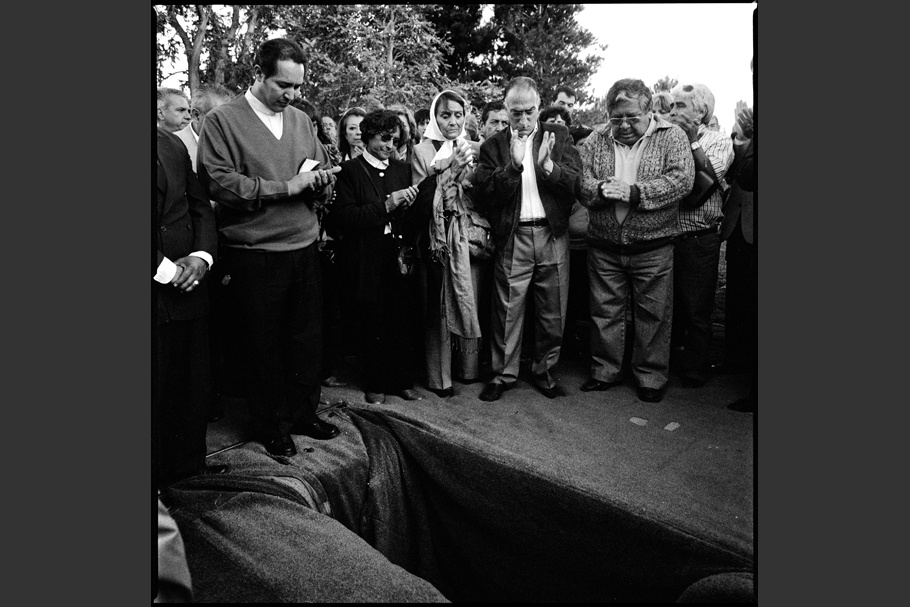
The funeral of Horacio Bau, a left-wing Montonero militant from Trelew. Bau disappeared in La Plata, Argentina, in November 1977. He was buried by the military as a “no name” in a cemetery in La Plata. In early 2007, his remains were found and identified by the Equipo Argentino de Antropologia Forense, a nongovernmental scientific organization. Thirty years after his disappearance, Bau was reinterred by his family in his hometown.
Trelew, Argentina, November 2007.
20140128-pina-mw21-021-910
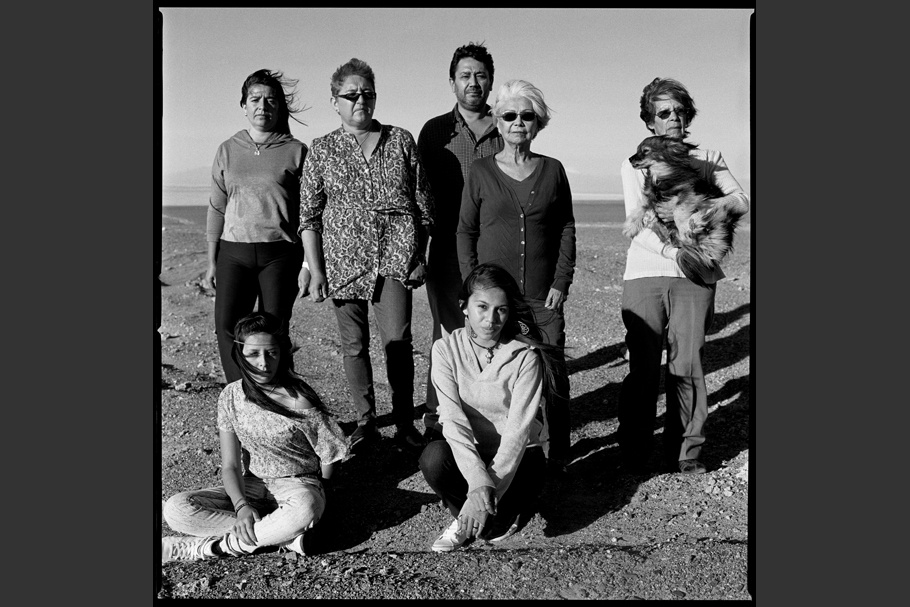
Families of the politically “disappeared” in Calama, Chile, stand near the graves where 26 political prisoners were buried by the Chilean military. After the September 11, 1973, military coup by General Augusto Pinochet, Chilean military leaders and Pinochet organized a special task force known as the “Caravan of Death” that swept through the north of the country. The task force picked up political prisoners for interrogation, torture, and often, execution. People killed by the task force were buried in remote, undisclosed locations. They just “disappeared” and their families never learned what happened to them.
Calama, Chile, February 2012.
João Pina was born in Lisbon, Portugal, and began working as a photographer in 1999. He graduated from the International Center of Photography’s Documentary Photography and Photojournalism Program in New York. He is currently based in Argentina.
Pina’s photographs have been published in D La Repubblica delle Donne, Days Japan, El Pais, Expresso (Portugal), GEO, La Vanguardia, L’Espresso (Italy), the New York Times, the New Yorker, Newsweek, Stern, Time, and Visão, among others.
In New York City, his work has been exhibited at the Howard Greenberg Gallery (2011, group show), the International Center of Photography (2005 and 2012, group shows), and Point of View Gallery (2008, solo show). Internationally, Pina’s work has been shown at the Casa Fernando Pessoa (2006, Portugal, group show), the Canon Gallery (2007, Japan, group show), the Centro Portugês de Fotografia (2007, Portugal, solo show), the KGaleria (2009, Portugal, solo show), and Visa pour l’Image (2010, France, group show).
In 2007, Pina published his first book, Por Teu Livre Pensamento, featuring the stories of 25 former Portuguese political prisoners. This project inspired an Amnesty International advertising campaign that won him a Gold Lion Award in the 2011 Cannes Lions International Festival of Creativity. He was a finalist for the Henri Nannen Prize and the CARE International Award for Humanitarian Reportage (2011), received the Estação Imagem grant (2010), and was a finalist for the Pierre and Alexandra Boulat Association Award (2009).
João Pina
In 1975, in the midst of the Cold War, six South American countries—Argentina, Bolivia, Brazil, Chile, Paraguay, and Uruguay—that were ruled by right-wing military dictatorships created Operation Condor. It was a secret military plan aimed at eliminating political opponents using shared military resources and exchanges of information, prisoners, and torture techniques.
This extensive campaign—carried out over a period of more than three years—resulted in the extrajudicial executions of at least 60,000 people, mostly leftist youth inspired by the Cuban revolution. The number of victims may be much higher, but cannot be confirmed both because of the secrecy in which the repression took place, and because many of the mass executions were carried out in ways that the bodies disappeared forever in jungles, forests, rivers, and oceans.
From the Amazon jungle in Brazil to the cold open lands of Patagonia, thousands of victims remain buried in unmarked mass graves, while survivors struggle to cope with their memories. I have witnessed survivors and families dealing with problems such as acute depression, paranoia, and other psychiatric illnesses due to the immense traumas they underwent at the hands of the regimes that ruled 30 years ago.
The secrecy of Operation Condor has endured because of the nature of the political transitions that took place. In most of the countries involved, fragile democracies succeeded the military regimes, and remnants of former dictatorships forced sweeping political amnesties for the military. It has taken years for these amnesties to be overturned, and in some places, is still an ongoing battle. Many relatives of the victims still don’t know what happened to their loved ones, and the majority of those responsible for their deaths and disappearances have never been brought to justice.
This project aims to create images of something that happened in the past. I sought to create a visual narrative of one of the darkest periods in South America’s history by returning to the places where torture and disappearances had occurred, portraying survivors and victims’ families today, and using archival images taken by photographers and security forces from that period.
I hope the resulting work will not only create a visual memory, but also aid survivors and human rights organizations in bringing those responsible to justice.
—João Pina, January 2014